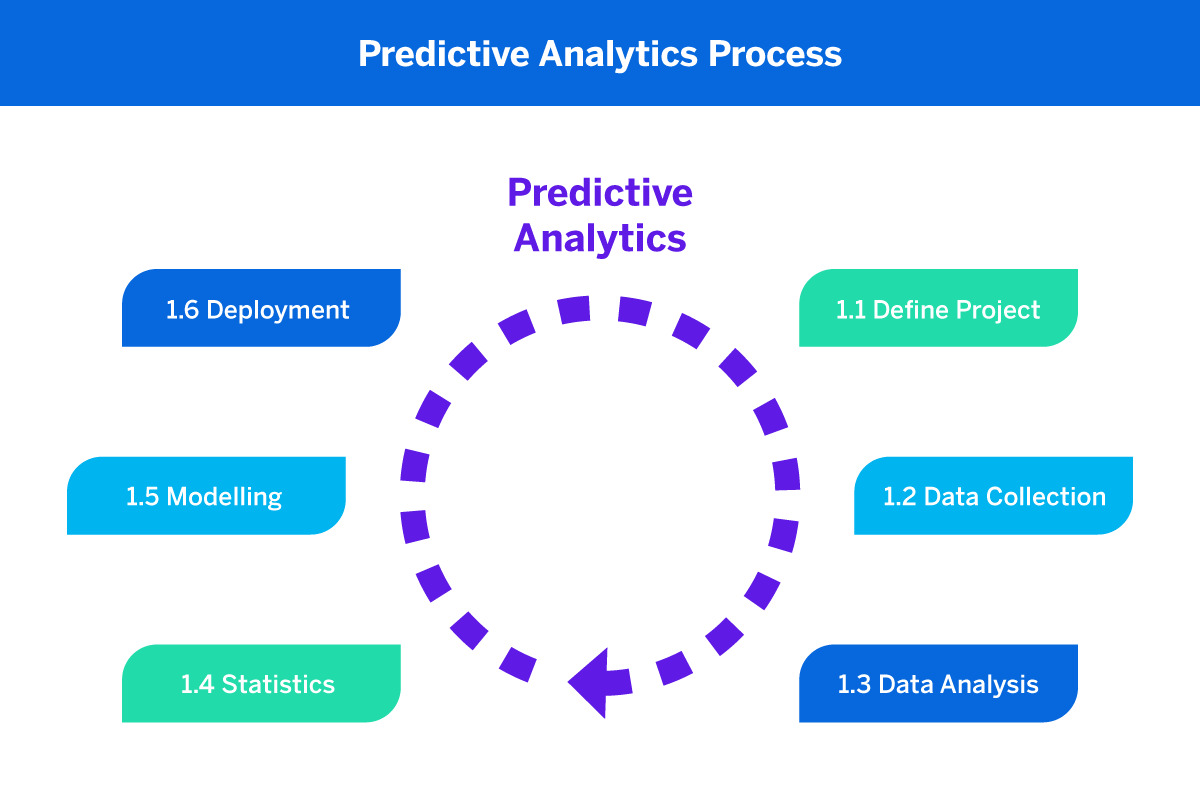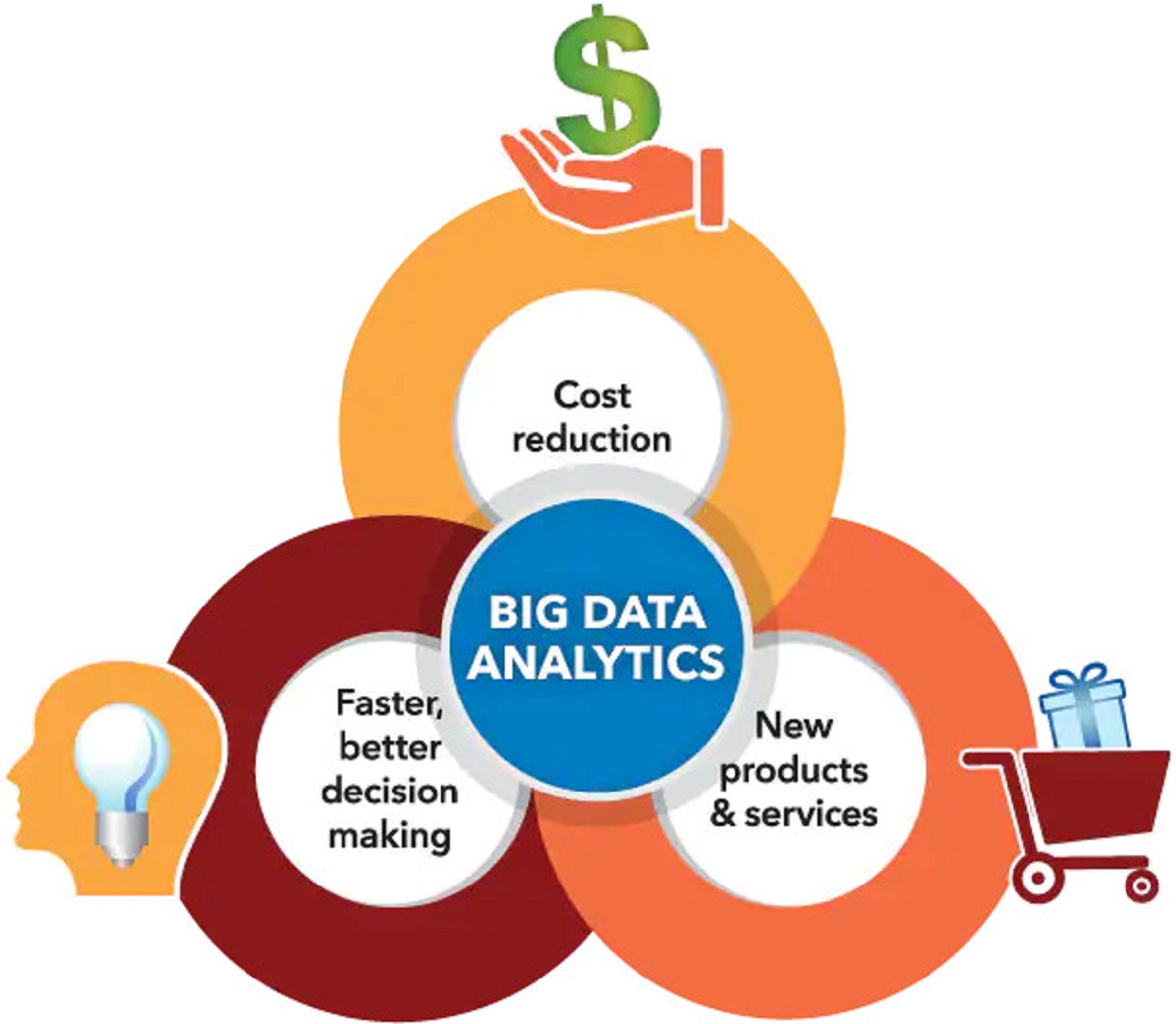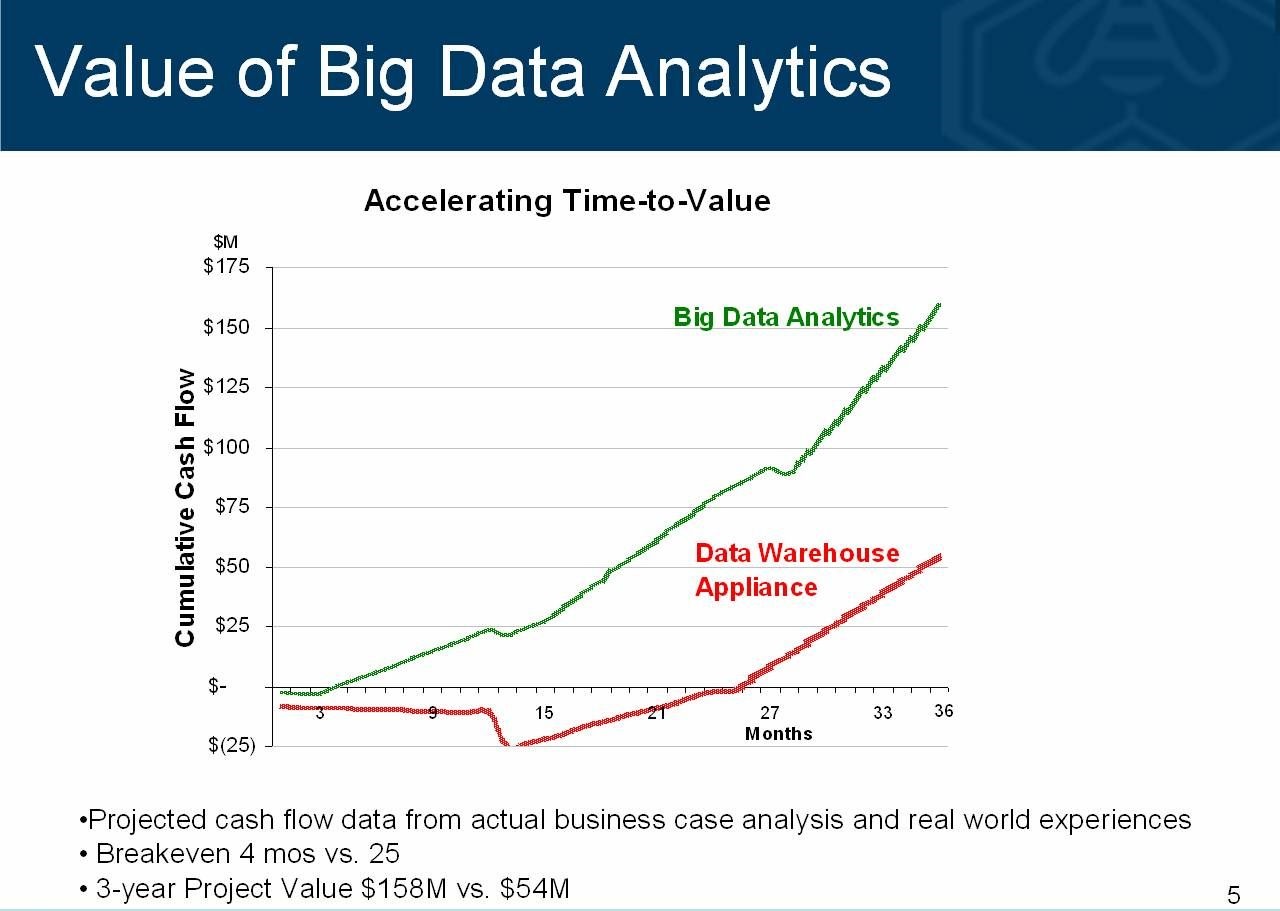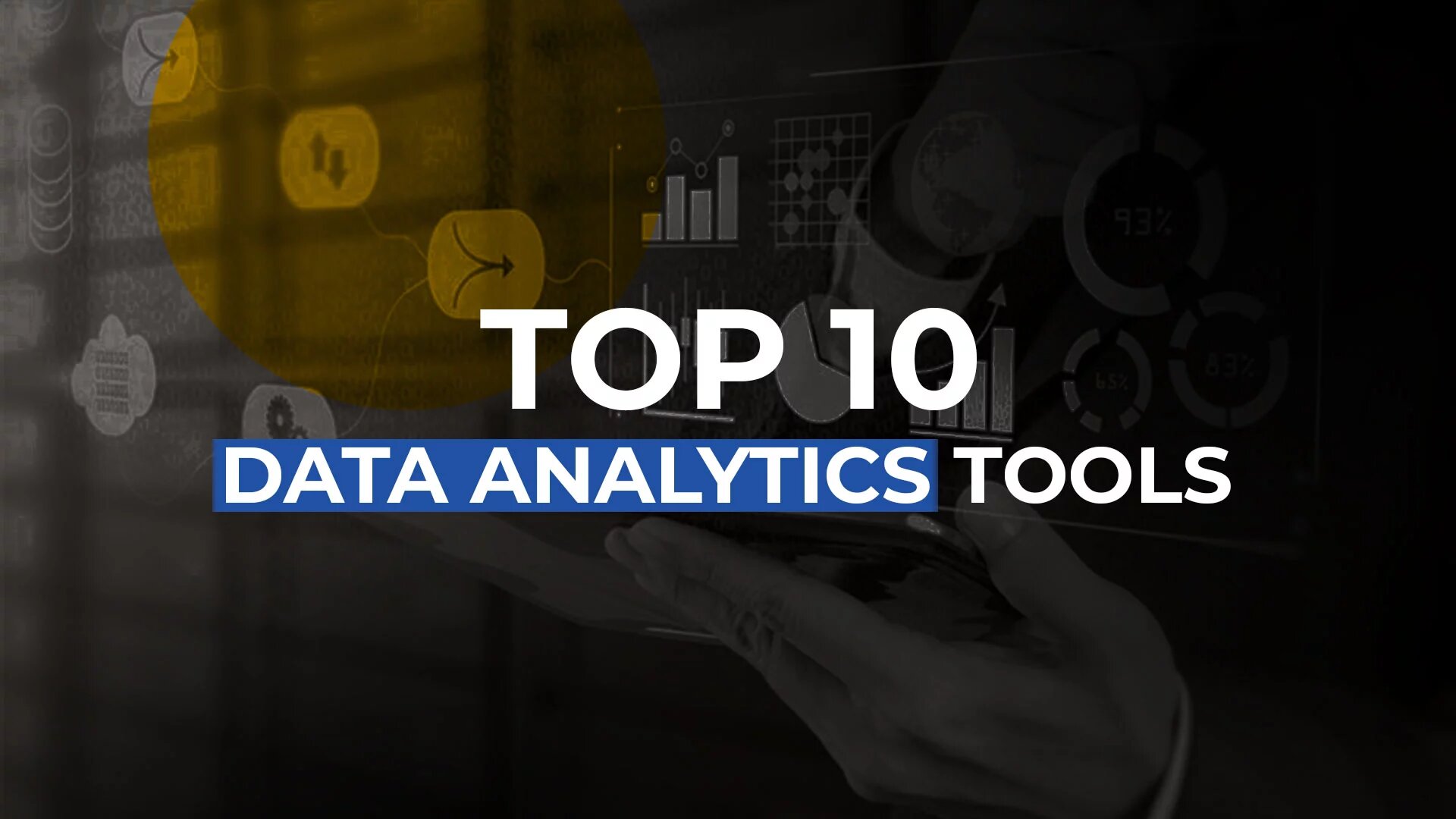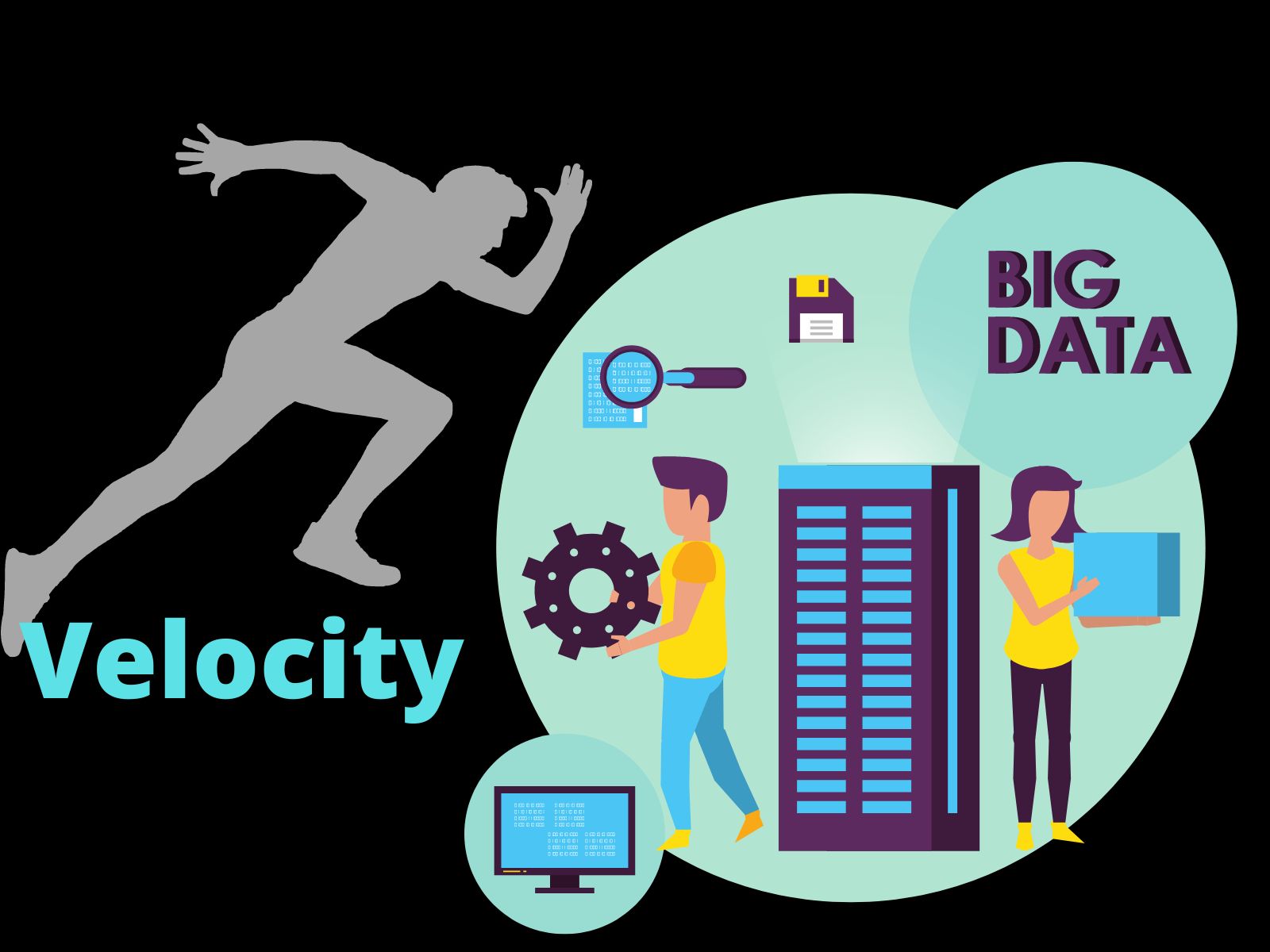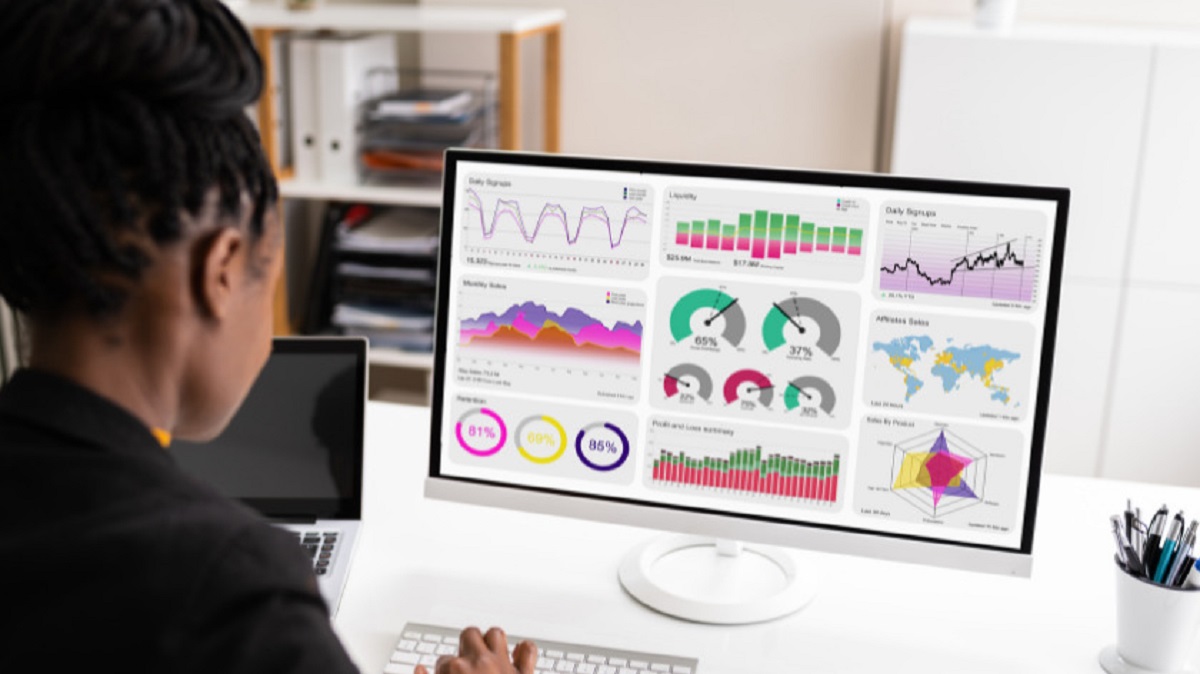Introduction
In today’s digital age, the sheer volume of data generated on a daily basis is staggering. From social media posts, website interactions, and online transactions to sensor data, emails, and customer feedback, the world has become a data-driven society. This massive amount of data, known as Big Data, has transformed various industries, including the world of business, revolutionizing the way companies operate and make decisions.
But what exactly is Big Data? Big Data refers to extremely large and complex data sets that require advanced analytics and processing tools to derive meaningful insights. These data sets are characterized by the “3Vs”: volume, velocity, and variety. Volume refers to the vast amount of data produced, velocity refers to the speed at which data is generated and needs to be analyzed, and variety signifies the diverse sources and formats of data.
The impact of Big Data on business has been profound, enabling companies to extract valuable insights, make data-driven decisions, and gain a competitive advantage in the market. It has opened up new possibilities for operational efficiency, customer experience improvements, personalized marketing, and predictive analytics. Moreover, Big Data has also presented challenges and risks that businesses need to navigate to fully harness its potential.
In this article, we will explore how Big Data has changed the world of business. We will delve into the various ways it has transformed business operations, decision-making processes, customer experiences, and supply chain management. Additionally, we will examine the benefits, challenges, and risks associated with harnessing Big Data for business purposes.
What is Big Data?
Big Data refers to the vast amount of data that is generated, collected, and stored by organizations. This data comes from various sources, including social media, websites, mobile devices, sensors, and more. What sets Big Data apart is not just its size, but also its complexity, as it often includes unstructured or semi-structured data formats.
The term “Big Data” is often associated with the “3Vs”: volume, velocity, and variety. Volume refers to the sheer volume of data that is being generated and collected at an unprecedented rate. This includes everything from customer interactions and transactions to machine-generated data and log files. The velocity aspect of Big Data relates to the speed at which data is being generated, transmitted, and processed. With the advancement of technology, data is now being generated in real-time or near real-time, putting immense pressure on organizations to analyze and extract insights from it quickly. Finally, variety refers to the diverse range of data sources and formats that make up Big Data. This includes structured data (such as databases and spreadsheets), unstructured data (such as text documents, images, and videos), and semi-structured data (such as social media posts and sensor data).
The incredible growth of Big Data has been driven by several factors. First, the rise of the internet, social media, and mobile devices has resulted in an explosion of data being created and shared. Second, advancements in technology, such as cloud computing and storage, have made it easier and more cost-effective for organizations to collect and store massive amounts of data. Finally, the proliferation of connected devices and the Internet of Things (IoT) has further contributed to the exponential growth of data.
To make sense of Big Data, organizations rely on advanced analytical techniques and technologies. This includes data mining, machine learning, natural language processing, and predictive analytics. These tools help uncover patterns, trends, and insights buried within the vast amount of data, enabling organizations to make data-driven decisions and gain a competitive edge.
The Impact of Big Data on Business
Big Data has had a profound impact on the world of business, transforming the way companies operate and make decisions. By leveraging the power of Big Data analytics, businesses can extract valuable insights from their data, leading to increased operational efficiency, enhanced decision-making, improved customer experiences, and more.
One of the key benefits of Big Data in business is the ability to achieve increased operational efficiency. By analyzing large datasets, organizations can identify bottlenecks and inefficiencies in their processes, enabling them to optimize their operations and reduce costs. For example, through data analysis, companies can identify supply chain inefficiencies, optimize inventory levels, and improve logistics, ultimately enhancing overall operational performance.
Another significant impact of Big Data is its ability to enhance decision-making. By analyzing large volumes of data in real-time, companies can make more informed and data-driven decisions. For example, retailers can analyze customer purchase patterns to determine optimal pricing strategies, while financial institutions can utilize predictive analytics to identify potential fraud and risk factors. This enables businesses to make proactive decisions, mitigate potential risks, and seize opportunities for growth.
In addition, Big Data has revolutionized the way businesses interact with their customers and deliver personalized experiences. Through data analysis, organizations can gain a deep understanding of customer preferences, behaviors, and needs. This enables companies to tailor their products, services, and marketing campaigns to individual customers, creating personalized experiences that drive customer satisfaction and loyalty. For example, e-commerce platforms can use customer browsing and purchase history to recommend relevant products, while streaming services can analyze user preferences to curate personalized content recommendations.
Furthermore, Big Data has revolutionized marketing by allowing businesses to target their audience more effectively. By analyzing customer data and online behavior, companies can create highly targeted and personalized marketing campaigns. This enables businesses to deliver the right message to the right audience at the right time, resulting in higher conversion rates and increased customer engagement. For example, online retailers can use customer browsing and purchase history to send personalized product recommendations, while social media platforms can leverage user interests and demographics for targeted advertising campaigns.
Big Data has also revolutionized supply chain management by enabling organizations to optimize their processes and enhance efficiency. By analyzing data from various sources, such as sensors, transportation logs, and inventory levels, companies can gain real-time visibility into their supply chains. This allows them to identify bottlenecks, optimize transportation routes, streamline inventory management, and ensure timely delivery, ultimately improving customer satisfaction and reducing costs.
In summary, Big Data has had a transformative impact on businesses, providing valuable insights that lead to increased efficiency, improved decision-making, enhanced customer experiences, personalized marketing, and optimized supply chain management. By harnessing the power of Big Data analytics, companies can stay ahead of the competition, adapt to changing market conditions, and drive innovation and growth.
Increased Operational Efficiency
One of the significant impacts of Big Data on businesses is the ability to achieve increased operational efficiency. Through the analysis of large datasets, organizations can identify bottlenecks and inefficiencies in their processes, allowing them to optimize their operations and reduce costs.
Big Data analytics helps organizations gain insights into their operations by analyzing vast volumes of data. For example, retailers can analyze sales data along with customer demographics, weather data, and social media trends to identify optimal pricing strategies. By considering these factors, retailers can set competitive prices that maximize profitability while still attracting customers. Additionally, analyzing data from the supply chain can help identify inefficiencies and optimize inventory levels. This enables businesses to streamline their logistics and reduce stockouts or excess inventory, leading to cost savings.
Moreover, Big Data analytics allows organizations to predict equipment failures and proactively schedule maintenance. By analyzing real-time sensor data, companies can detect patterns and anomalies that may indicate equipment malfunction. With this knowledge, organizations can schedule maintenance at optimal times to minimize downtime and ensure smooth operations. This approach reduces costs associated with unexpected equipment failure, improves overall equipment effectiveness, and enhances customer satisfaction.
Furthermore, Big Data analytics can help organizations optimize their workforce and staffing levels. By analyzing historical data on customer demand and employee productivity, businesses can determine the optimal number of staff members needed during different periods. This ensures that adequate staffing levels are maintained, reducing labor costs while meeting customer demand efficiently.
Another aspect where Big Data improves operational efficiency is through the analysis of real-time data from Internet of Things (IoT) devices. Organizations can collect and analyze data from sensors embedded in devices to monitor performance, identify issues, and trigger automated responses. For example, in manufacturing, IoT sensors can monitor equipment performance, enabling businesses to detect deviations from normal operating conditions. This information can be used to schedule maintenance, preventing breakdowns and optimizing production efficiency.
In summary, Big Data plays a crucial role in increasing operational efficiency for businesses. By leveraging data analytics, organizations can identify operational bottlenecks, optimize pricing and inventory management, predict equipment failures, optimize staffing levels, and utilize IoT data for real-time monitoring. These improvements not only lead to cost savings but also enhance overall productivity and customer satisfaction. By harnessing the power of Big Data analytics, businesses can achieve streamlined operations and gain a competitive advantage in their respective industries.
Enhanced Decision-making
Big Data has had a transformative impact on decision-making processes within businesses. By analyzing large volumes of data in real-time, organizations can make more informed and data-driven decisions, leading to improved outcomes and a competitive edge in the market.
Traditional decision-making processes often relied on intuition and limited data. However, with the advent of Big Data, organizations now have access to vast amounts of data from various sources. By analyzing this data using advanced analytics techniques, businesses can uncover valuable insights and trends that were previously hidden.
For example, financial institutions can analyze historical transaction data, market trends, and customer demographics to identify patterns of fraudulent activity. This enables them to implement proactive measures to detect and prevent fraud, minimizing financial losses and protecting customers’ assets. Additionally, businesses can utilize predictive analytics to forecast market demand, enabling them to make informed decisions about inventory levels, production schedules, and pricing strategies.
Moreover, Big Data analytics allows organizations to leverage real-time data to make agile and well-informed decisions. For instance, e-commerce platforms can analyze customer browsing behavior, purchase history, and market trends to recommend personalized product offerings, improving customer satisfaction and increasing conversion rates. Similarly, manufacturing companies can monitor real-time sensor data to identify production inefficiencies, enabling them to make timely adjustments and optimize production processes.
Another area where Big Data enhances decision-making is in the field of marketing. By analyzing data on customer preferences, behavior, and demographics, businesses can create targeted and personalized marketing campaigns. This enables organizations to deliver the right message to the right audience at the right time, resulting in higher conversion rates and increased customer engagement. For example, an online retailer can analyze customer purchase history and browsing patterns to send personalized promotions and recommendations, maximizing the effectiveness of their marketing efforts.
Furthermore, data-driven decision-making extends to strategic planning and business growth. Organizations can leverage Big Data analytics to gain insights into market trends, customer preferences, and competitive landscapes. This information allows businesses to identify new opportunities, develop innovative products or services, and refine their business strategies. By making data-driven decisions, organizations can better align their resources, optimize their operations, and stay ahead of the competition.
In summary, Big Data has revolutionized decision-making in businesses. By leveraging vast amounts of data and advanced analytics techniques, organizations can make informed, timely, and data-driven decisions in various areas such as risk management, marketing, production, and strategic planning. By doing so, businesses can improve operational efficiency, enhance customer experiences, drive innovation, and gain a competitive advantage in the market.
Improving Customer Experience
Big Data has revolutionized the way businesses interact with their customers and deliver personalized experiences. Through the analysis of vast amounts of data, organizations can gain a deep understanding of customer preferences, behaviors, and needs, enabling them to enhance the overall customer experience.
One of the key ways Big Data improves customer experience is through personalization. By analyzing customer data, businesses can tailor their products, services, and marketing campaigns to individual customers. This customization creates a personalized experience that resonates with customers, leading to higher satisfaction and loyalty. For example, e-commerce platforms can use customer browsing and purchase history to recommend relevant products, while streaming services can analyze user preferences to curate personalized content recommendations.
Furthermore, Big Data analytics helps businesses understand customer sentiment and feedback. By analyzing data from various sources, such as social media, customer reviews, and surveys, organizations can gain real-time insights into customer opinions. This knowledge enables businesses to respond promptly to customer feedback, address concerns, and provide better customer support. By being proactive and responsive, organizations can build stronger relationships with customers, leading to increased satisfaction and loyalty.
Another way Big Data improves customer experience is through the optimization of business processes. Companies can analyze customer data to identify pain points and bottlenecks in their customer journey. By addressing these issues, businesses can streamline their processes, reduce friction, and provide a smoother and more enjoyable experience for customers. For example, analyzing data on customer interactions with a website or mobile app can help identify areas that need improvement, such as slow loading times or confusing navigation.
Moreover, Big Data enables organizations to anticipate customer needs and deliver proactive solutions. By analyzing historical data, businesses can identify patterns and trends that indicate upcoming customer needs or demands. This allows companies to anticipate customer requirements in advance and offer personalized recommendations or solutions. For instance, a travel agency can analyze customer travel history and preferences to suggest personalized vacation packages or recommend attractions based on past behavior.
Additionally, Big Data analytics helps businesses optimize their pricing strategies to enhance the customer experience. By analyzing market trends, competitor pricing, and customer purchasing behavior, organizations can determine optimal pricing points. This ensures that customers perceive fair value for products or services, leading to increased satisfaction and repeat business.
In summary, Big Data plays a crucial role in improving the customer experience. By leveraging customer data and advanced analytics, businesses can deliver personalized experiences, better understand customer sentiment, optimize business processes, anticipate customer needs, and optimize pricing strategies. By providing a more tailored and satisfying experience, organizations can foster stronger customer relationships and gain a competitive edge in the market.
Personalized Marketing
Big Data has transformed the field of marketing by enabling businesses to target their audience more effectively and deliver personalized experiences. By analyzing customer data and online behavior, companies can create highly targeted and tailored marketing campaigns, resulting in higher engagement, conversion rates, and customer satisfaction.
One of the key benefits of Big Data in marketing is the ability to create personalized experiences for customers. By analyzing customer data, businesses can gain insights into individual preferences, interests, and behaviors. This allows organizations to deliver targeted messages and offers that resonate with customers on a personal level. For example, an e-commerce platform can use customer browsing and purchase history to provide personalized product recommendations, increasing the likelihood of a purchase.
Moreover, Big Data enables businesses to segment their customer base more effectively. By analyzing customer demographics, purchasing behavior, and online interactions, organizations can identify distinct customer segments with specific needs and preferences. This allows companies to tailor their marketing messages and strategies to each segment, delivering more relevant and impactful campaigns. For instance, a clothing retailer may segment their customer base based on age, gender, and style preferences to offer targeted promotions and recommendations to each segment.
Furthermore, Big Data analytics helps marketers optimize their marketing channels and budget allocation. By analyzing data on customer interactions with different marketing channels, businesses can identify the most effective channels for reaching and engaging their target audience. This enables marketers to focus their efforts and resources on the channels that generate the highest return on investment. For example, if data analysis shows that a significant portion of the target audience engages more with social media advertising rather than traditional print ads, businesses can allocate a larger portion of their marketing budget to social media campaigns.
Another aspect where Big Data plays a crucial role is in real-time marketing. By analyzing data in real-time, organizations can respond quickly to changing customer behavior and market trends. For example, retailers can monitor customer interactions and purchase patterns in real-time to identify opportunities for upselling or cross-selling. This allows businesses to deliver targeted promotions or recommendations at the right time, increasing the likelihood of a purchase and enhancing the customer experience.
Additionally, Big Data analytics helps organizations measure and optimize the effectiveness of their marketing campaigns. By analyzing data on customer responses, conversions, and engagement levels, businesses can gain insights into the performance of their marketing initiatives. This enables marketers to make data-driven decisions, refine their strategies, and allocate resources more effectively for future campaigns.
In summary, Big Data has revolutionized the field of marketing by allowing businesses to deliver personalized experiences, segment their customer base effectively, optimize marketing channels and budget allocation, engage in real-time marketing, and measure campaign effectiveness. By leveraging the power of Big Data analytics, organizations can create meaningful connections with their target audience, increase customer engagement, and drive business growth.
Efficient Supply Chain Management
Big Data has revolutionized supply chain management by enabling organizations to optimize their processes, enhance efficiency, and improve overall performance. By analyzing data from various sources, businesses can gain real-time visibility into their supply chains, identify bottlenecks, and make informed decisions to streamline operations.
One of the key benefits of using Big Data in supply chain management is the ability to optimize inventory levels. By analyzing historical sales data, customer demand patterns, and market trends, organizations can accurately forecast demand and adjust inventory levels accordingly. This prevents overstocking or stockouts, improves cash flow, and ensures that the right products are available when customers need them.
Furthermore, Big Data analytics allows businesses to gain real-time insights into their supply chains. By monitoring and analyzing data from sensors embedded in transportation systems, warehouses, and manufacturing equipment, organizations can proactively identify potential issues or bottlenecks. This enables businesses to take corrective actions, optimize routes, and ensure timely delivery of goods and services to customers.
Additionally, Big Data analytics helps organizations optimize their logistics operations. By analyzing data on shipping routes, transportation costs, and delivery times, businesses can identify inefficiencies and find opportunities for improvement. This can include optimizing the selection of carriers, improving route planning, and reducing transportation costs. By making data-driven decisions in logistics, organizations can enhance efficiency, reduce lead times, and improve customer satisfaction.
Moreover, Big Data analytics can improve supplier management and procurement processes. By analyzing data on supplier performance, organizations can identify reliable suppliers, negotiate better terms, and ensure timely delivery of goods and services. The analysis of supplier data also helps organizations identify potential risks, such as supplier capacity constraints or financial stability issues. By having a comprehensive understanding of their suppliers, businesses can proactively address potential challenges before they impact the supply chain.
Big Data analytics also enables organizations to implement predictive maintenance strategies. By analyzing real-time data generated by sensors embedded in machinery and equipment, businesses can detect patterns and anomalies that may indicate potential failures. This allows organizations to schedule proactive maintenance, reducing downtime and improving overall operational efficiency.
In summary, Big Data plays a crucial role in efficient supply chain management. By leveraging data analytics, organizations can optimize inventory levels, gain real-time visibility into their supply chains, optimize logistics operations, enhance supplier management, and implement predictive maintenance strategies. These improvements lead to streamlined operations, reduced costs, improved customer satisfaction, and a competitive advantage in the market.
Predictive Analytics and Forecasting
Big Data has revolutionized businesses by enabling them to utilize predictive analytics and forecasting techniques. By analyzing large volumes of data, organizations can make accurate predictions about future trends, customer behavior, and market conditions. This allows businesses to make informed decisions, allocate resources effectively, and stay ahead of the competition.
One of the key applications of Big Data in predictive analytics is demand forecasting. By analyzing historical sales data, market trends, and external factors such as seasonality or economic indicators, businesses can forecast future demand for their products or services. This enables organizations to optimize inventory levels, schedule production or purchase orders, and plan resources accordingly. Accurate demand forecasting helps reduce costs associated with stockouts or excess inventory, leading to improved customer satisfaction and increased profitability.
Furthermore, Big Data analytics helps businesses in predictive maintenance. By monitoring data collected from sensors embedded in machinery and equipment, organizations can identify patterns and anomalies that indicate potential failures. This enables proactive maintenance scheduling, reducing downtime, and improving operational efficiency. By preventing unexpected breakdowns and optimizing maintenance schedules, businesses can reduce costs associated with repairs and increase equipment utilization.
Moreover, Big Data can be utilized in predictive analytics for customer behavior analysis. By analyzing customer data such as browsing patterns, purchase history, and demographics, organizations can predict individual customer preferences, needs, and future actions. This allows businesses to personalize marketing campaigns, make product recommendations, and deliver targeted offers to customers, increasing the likelihood of conversion and maximizing customer satisfaction.
Additionally, Big Data analytics facilitates predictive analytics for risk management. By analyzing past data, market trends, and external factors, businesses can identify potential risks and make informed decisions to mitigate them. For example, financial institutions can use predictive analytics to identify potential credit risks, detect fraudulent activities, and assess loan default probabilities. By utilizing predictive analytics, businesses can proactively manage and minimize risks, protecting their assets and improving financial stability.
Moreover, Big Data analytics assists businesses in predictive pricing. By analyzing market data, competitor pricing, and customer behavior, organizations can predict optimal pricing points. This data-driven approach helps businesses fine-tune their pricing strategies to maximize profitability and competitiveness in the market. By utilizing predictive pricing, organizations can stay agile in dynamic markets and respond to changing customer preferences and market conditions effectively.
In summary, Big Data plays a critical role in predictive analytics and forecasting. By leveraging large volumes of data and advanced analytics techniques, organizations can make accurate predictions about demand, customer behavior, asset performance, and potential risks. These predictions enable businesses to make informed decisions, optimize operations, reduce costs, increase customer satisfaction, and gain a competitive edge in the market.
Risk Management and Fraud Detection
Big Data has become an invaluable asset in the field of risk management and fraud detection. By analyzing large volumes of data from various sources, organizations can identify and mitigate potential risks, as well as detect fraudulent activities in a timely manner.
One of the key benefits of Big Data in risk management is the ability to analyze historical data to identify and assess potential risks. By examining past performance, market trends, and external factors, organizations can gain insights into various risks, such as financial risks, operational risks, or regulatory risks. This allows businesses to develop risk mitigation strategies, implement appropriate controls, and make informed decisions to minimize the impact of potential risks.
Furthermore, Big Data analytics helps organizations detect and prevent fraudulent activities. By analyzing large volumes of data, businesses can identify patterns and anomalies that may indicate fraudulent behavior. For example, financial institutions can analyze transactional data to detect suspicious transactions or unusual spending patterns. This enables organizations to take immediate action to minimize and prevent financial losses due to fraudulent activities.
Moreover, Big Data assists in fraud detection by leveraging advanced analytics techniques. By utilizing machine learning algorithms and anomaly detection, organizations can identify deviations from normal patterns, potentially indicating fraudulent behavior. For example, insurance companies can use Big Data analytics to detect fraudulent claims by analyzing patterns, correlations, and historical data related to claims. This enables them to flag suspicious claims for further investigation, preventing fraudulent payments and protecting the bottom line.
Additionally, Big Data analytics enables organizations to detect fraud in real-time or near real-time. By analyzing data in real-time, businesses can identify suspicious activities as they occur and respond immediately. This real-time fraud detection capability is particularly valuable in industries with high transaction volumes and rapid data generation, such as e-commerce or financial services. Timely detection of fraudulent activities helps organizations prevent further losses, maintain customer trust, and safeguard their reputation.
Moreover, Big Data analytics can be utilized for risk modeling and scenario analysis. By analyzing historical and real-time data, organizations can simulate different risk scenarios and assess their potential impact. This allows businesses to evaluate their risk exposure and develop strategies to mitigate potential losses. For example, financial institutions can use scenario analysis to assess the impact of an economic downturn on their portfolios and adjust their risk management strategies accordingly.
In summary, Big Data plays a crucial role in risk management and fraud detection. By analyzing large volumes of data, organizations can identify potential risks, detect fraudulent activities, and mitigate losses. By utilizing advanced analytics techniques, businesses can enhance their risk modeling capabilities, improve real-time fraud detection, and protect their assets and reputation. Big Data analytics enables organizations to stay ahead of potential risks, enhance decision-making, and maintain a secure and trustworthy operating environment.
Challenges and Risks of Big Data
While Big Data offers numerous benefits and opportunities for businesses, it also presents a set of challenges and risks that organizations must navigate to fully harness its potential. Understanding and addressing these challenges is crucial for ensuring the successful implementation and utilization of Big Data initiatives.
One of the primary challenges of Big Data is data quality and accuracy. The sheer volume and variety of data can lead to inconsistencies, errors, and incomplete information. Poor data quality can significantly impact the reliability and validity of analytics, leading to inaccurate insights and decisions. Organizations need to invest in data cleansing, data governance, and quality control processes to ensure the accuracy and integrity of their data.
Another challenge is data privacy and security. With the increasing collection and analysis of personal and sensitive data, organizations must take robust measures to protect the privacy and security of this information. Data breaches and unauthorized access can lead to severe financial and reputational damage. Businesses need to implement strong data security measures, adhere to privacy regulations, and establish protocols for data access and sharing to mitigate risks associated with data breaches.
Furthermore, there is a challenge of data integration and interoperability. Organizations often have data residing in various systems and sources, making it difficult to integrate and analyze effectively. Data integration challenges can arise from incompatible formats, inconsistent data structures, and data silos within an organization. Organizations need to invest in data integration technologies and establish data governance frameworks to ensure seamless data integration and interoperability across different systems and sources.
In addition, the scalability and storage of Big Data can pose challenges. As data volumes continue to grow, organizations face the challenge of managing and storing these vast amounts of data. Traditional storage infrastructure may not be able to handle the scale and velocity of Big Data. Cloud computing and scalable storage solutions can help organizations address these challenges by providing flexible and scalable data storage capabilities.
Another significant challenge is the shortage of skilled data professionals. Analyzing and interpreting Big Data requires specialized skills in data analytics, data science, and statistics. Organizations may face difficulties in hiring and retaining highly skilled data professionals. Investing in training and development programs can help organizations build a skilled workforce to effectively leverage the potential of Big Data.
Moreover, ethical considerations and biases in data analysis can be a risk. As organizations rely more on Big Data analytics, it is crucial to consider ethical implications, such as potential discrimination or biased outcomes. Biases can be inherent in the data sources, analytics algorithms, or human judgment involved in data analysis. Organizations need to be vigilant in identifying and addressing any biases to ensure fair and unbiased decision-making.
In summary, Big Data presents a range of challenges and risks that organizations must address. These include data quality, privacy and security, data integration, scalability and storage, skilled workforce shortages, and ethical considerations. By overcoming these challenges and proactively managing the associated risks, organizations can fully harness the power of Big Data, make accurate and informed decisions, and gain a competitive advantage in their respective industries.
Conclusion
Big Data has revolutionized the world of business, providing organizations with unprecedented opportunities to extract valuable insights, optimize operations, make data-driven decisions, and enhance the overall customer experience. By leveraging the power of Big Data analytics, businesses can gain a competitive edge, drive innovation, and improve their bottom line.
Throughout this article, we have explored various aspects of how Big Data has transformed the business landscape. We have seen how it has increased operational efficiency by optimizing processes, improving decision-making by leveraging data-driven insights, and delivering personalized experiences through targeted marketing campaigns. Additionally, Big Data has enabled efficient supply chain management through accurate forecasting and real-time monitoring, while also enhancing risk management and fraud detection capabilities.
While Big Data offers immense opportunities, it also comes with its fair share of challenges and risks. Organizations must address issues related to data quality, privacy, security, integration, and scalability. They must also ensure they have a skilled workforce equipped with the necessary data analytics expertise. Moreover, ethical considerations and biases in data analysis must be carefully managed to ensure fairness and avoid discrimination.
In conclusion, Big Data has fundamentally changed the way businesses operate, enabling them to harness the power of data to drive growth, make informed decisions, and deliver exceptional customer experiences. Organizations that successfully navigate the challenges and risks associated with Big Data and adapt to the evolving landscape will be poised for success in this data-driven era. By embracing Big Data as a strategic asset, businesses can unlock new insights, stay ahead of the competition, and thrive in an increasingly digital and data-centric world.









